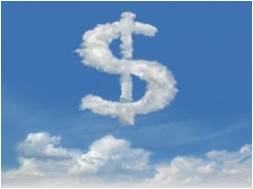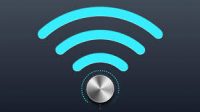 In Get Your Green On With BYOD, part I of our GreenIT 2.0 blog series, we talked about how the recent recession has had the unfortunate result of the end of many organization’s green IT initiatives. The commitment to green IT should be long term in order for companies to benefit from consistently improved return on investment. Businesses can recommit to green IT in a smaller ways like participating in eCycling programs and streamlining mobile device usage through the institution of a BYOD program. After experiencing the win/win/win of reducing costs, helping the environment and helping others in need in the community many companies will be inspired to take on larger green initiatives. In this installment we will discuss green IT in the cloud.
In Get Your Green On With BYOD, part I of our GreenIT 2.0 blog series, we talked about how the recent recession has had the unfortunate result of the end of many organization’s green IT initiatives. The commitment to green IT should be long term in order for companies to benefit from consistently improved return on investment. Businesses can recommit to green IT in a smaller ways like participating in eCycling programs and streamlining mobile device usage through the institution of a BYOD program. After experiencing the win/win/win of reducing costs, helping the environment and helping others in need in the community many companies will be inspired to take on larger green initiatives. In this installment we will discuss green IT in the cloud.
From 2011 to 2012, the volume of digital content grew 48 percent to 2.7 zettabytes, which is equal to 1,000 exabytes. This daily creation of data on the Web—and from all other sources—ensures that data volumes will just keep growing on this scale. In 2010 data centers accounted for 1.3% of total global energy usage and 2% of the U.S.’s total electricity use. Between 2000 and 2005 data center energy consumption grew 100%. Excessive power consumption is not only bad for the environment, the cost goes directly to the end user’s bottom line. The good news is through practicing greener set ups, data center electricity consumption after 2005 has been cut by on average 36%.
In 2008, the American Society of Heating, Refrigeration and Air Conditioning revised it guidelines for data centers setting the lowest temperature extreme at 64.4 degrees and 80.6 degrees at the high end. When vetting a data center, ask about the temperature and humidity set points the center utilizes. Studies have shown that by raising the temperature in data centers by even 1 degree can save a considerable amount of energy. An energy efficient data center should have well designed containment system that doesn’t allow hot air and cool air to mix. If your data center is local, look for strategically placed air vents and returns as well as enclosures or curtains designed to contain hot or cold aisles in the center. An efficient data center will have automated systems for monitoring and controlling HVAC and will use variable frequency drives to adjust motor speeds to match cooling to the actual workload. Finally, the data center should offer use management software that provides an overview of your energy usage and capacity and gives you the ability to optimize your systems to use less power.
Doing a little due diligence before making a commitment to a data center can go a long way in reducing energy costs and will contribute to the overall ROI for going green in your company. To learn more, view our archived webinar presentation, “Blue Skies, Green Cloud – The Hottest Ways to Squeeze Value from the Cloud” or contact Megan Meisner at mmeisner@launchpadonline.com or 813 920 0788 x210 to schedule a complimentary RevITup SilverCloud Technology Assessment.




